Conversational Marketing on WhatsApp
Conversational marketing on WhatsApp has made it possible for brands to engage and personalize the shopper’s experience at every stage of their...
Understand the impact of conversational commerce on your business. Discover how chatbots, messaging apps, and voice assistants are changing the way we shop.
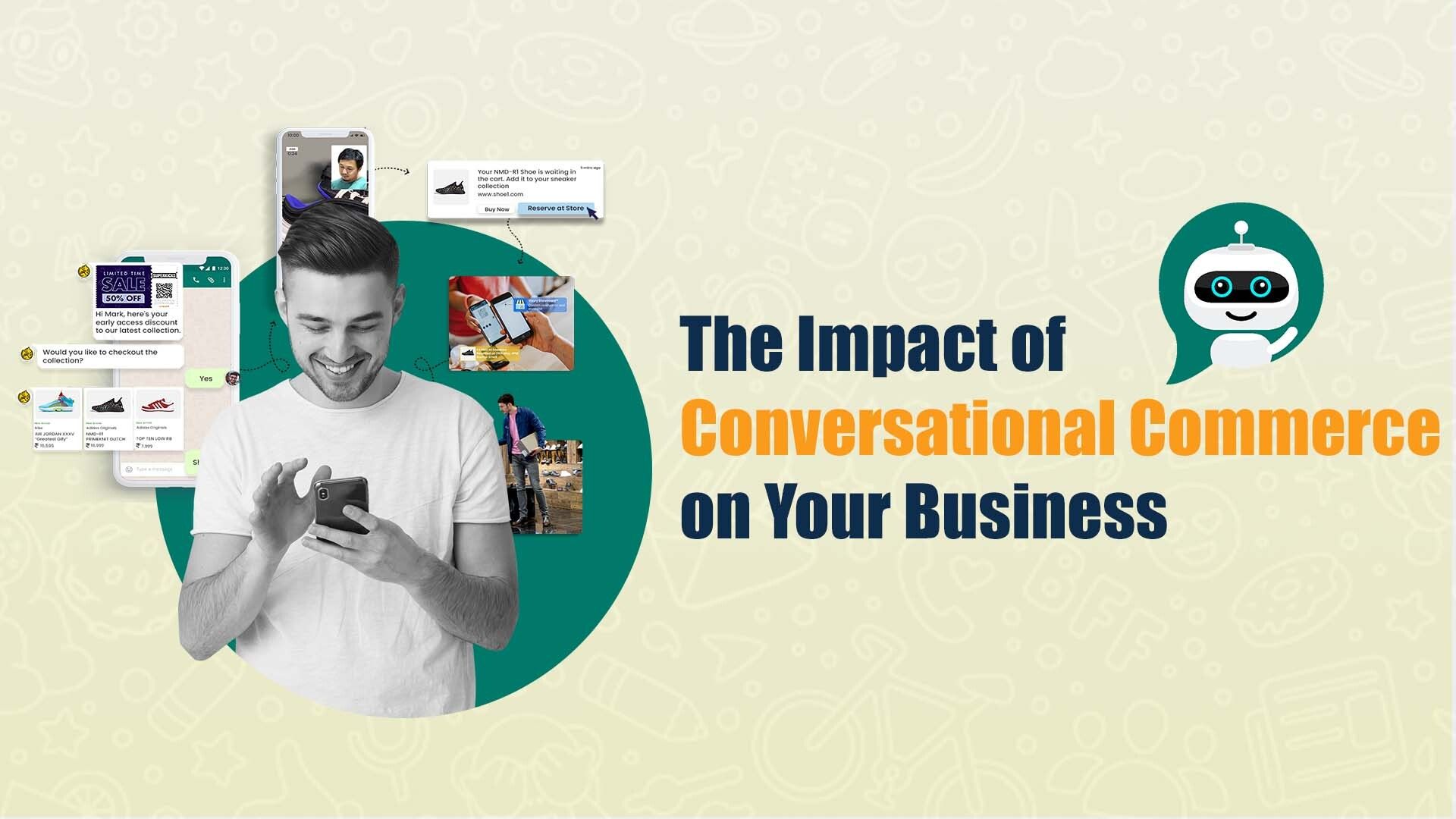
“Over an increasing period of time, computer-driven bots will become more human feeling to the point where the user can’t detect the difference and will interact with either human agent or the computer bought in roughly the same interaction paradigm,” said Chris Mesina, Inventor of the hashtag.
A defining factor for any business is how they interact with customers.
Great conversations can only happen when you know the other person. Customer engagement plays a major role throughout the buyer’s journey. Businesses need to be wherever customers are whether it’s via live chat, Facebook messenger, or WhatsApp.
And with conversational commerce, it is possible to collect data and insights on shopping behavior, taste, preferences, and more to know your customer better and create great conversations that convert.
It can be defined as an intersection between messaging apps and shopping. It allows businesses to offer personalized recommendations, browse and purchase products, customer support, and more via messaging apps. It also attempts to create an in-store experience by providing access to sales assistants, thus reducing cart abandonment rates and boosting conversion rates.
We asked our community on LinkedIn whether brands can use conversational chatbots to drive sales. Here's what they think
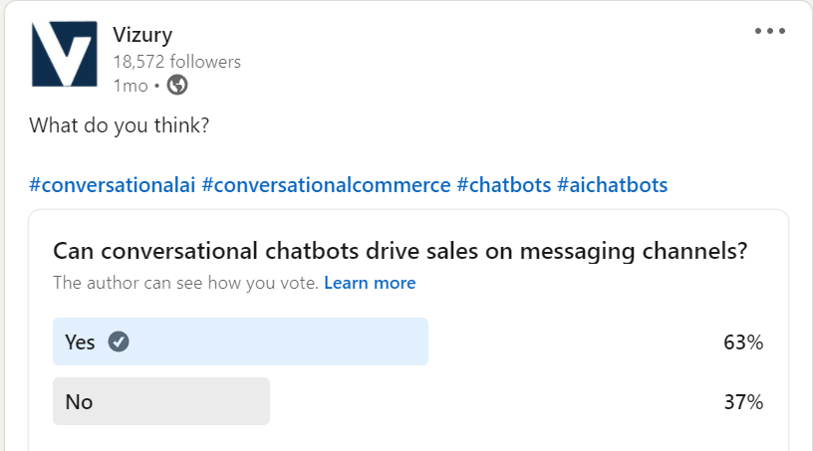
Here is a graphic representation of a shopper's journey:
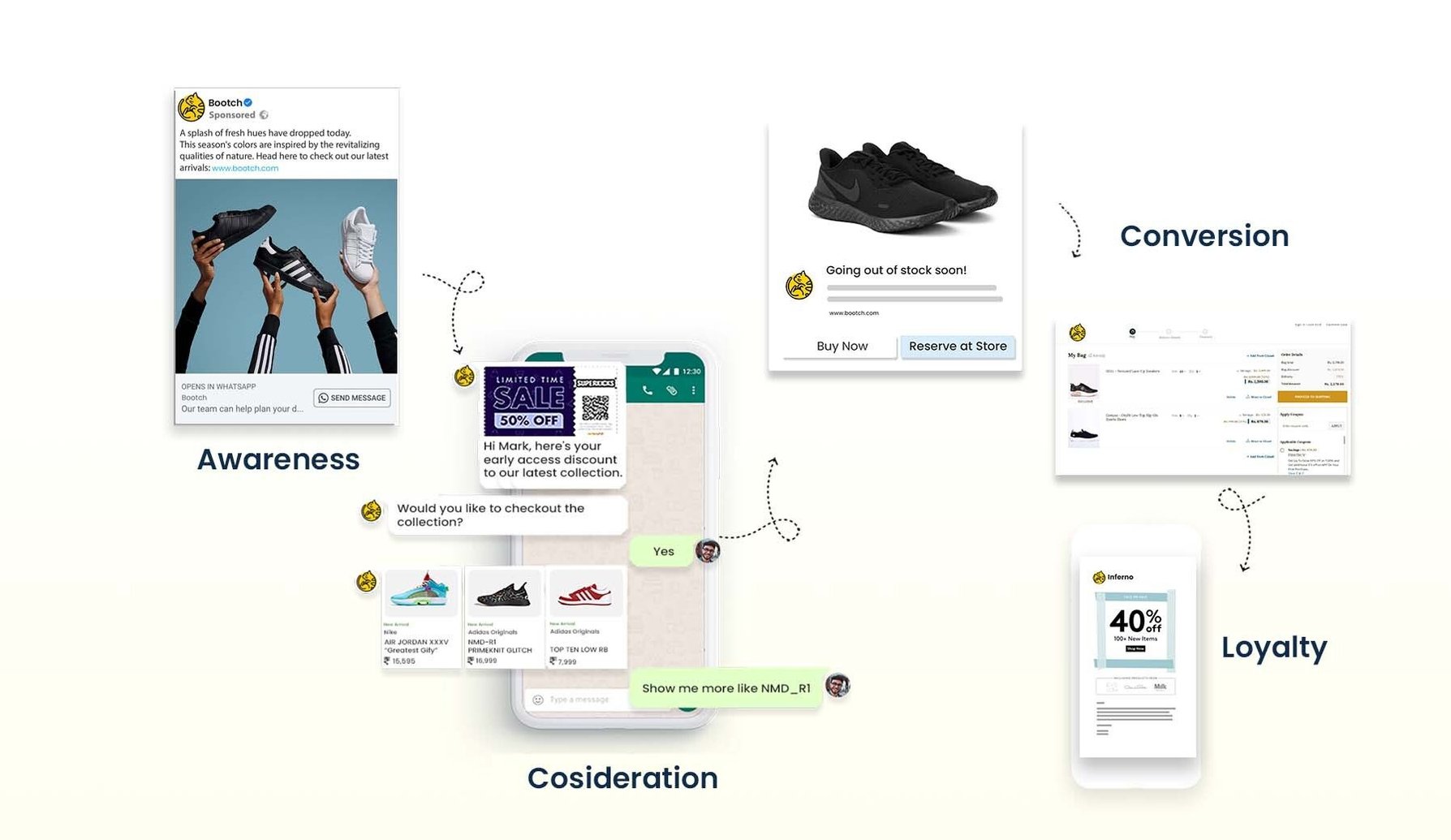
The customer journey constitutes five main stages. They are:
Awareness: In this stage, the customer is unaware of your product and lands on your targeted ad to discover what they are looking for. It is the most important stage where brands can use conversational commerce tools to acquire, understand and convert their customers.
Consideration: In this stage, the customer conducts research and learns about your brand. They are looking for more information, comparing you with other competitors, checking recommendations and reviews before making their purchase decision. Brands can use conversational AI to provide the exact information conversationally to educate customers on what they have to offer.
Decision: In this stage, the customer decides to purchase after researching all the available information. In this case, it is crucial for brands to keep the conversation going to make sure the customer doesn’t drop off. For instance, if a customer is checking out a shoe on WhatsApp, sending a video of the shoe to highlight the product quality can make him more convinced that your brand is the best choice.
Retention: In this stage, the customer has already purchased from you. Next, your brand needs to incentivize them to keep coming back to your store. Conversational commerce plays a major role in maintaining a good one-on-one relationship with customers. Reports show that it’s 5x cheaper to retain customers than to acquire new ones.
For instance, brands can do this by giving an instant 10% discount on the customer’s next purchase or sending promotional offers while asking for feedback.
Advocacy: This is the final stage of the buyer’s journey. In this stage, your satisfied customer vouches and advocates for your brand. Brands can use the power of conversation to ask for reviews or testimonials to further strengthen the relationship.
With the rise of on-the-go convenience with mobile phones, consumers have zero tolerance for friction. Consumers are more reliant on messaging apps for all forms of communication whether it's personal, business, or commerce. Consumers are now chatting with businesses to discover products, get product recommendations, process payments, and more. According to Research, 5 billion people send and receive text messages globally and this is expected to reach 5.9 billion by 2025. Whether consumers are looking to discover products, complete a payment, search a store, book a reservation, people can chat with businesses to complete these actions. Conversations are now uniquely positioned to deliver better customer experiences. Hence, c-commerce is bridging the gap between intent and gratification.
Here’s how you can use this marketing technique for your business:
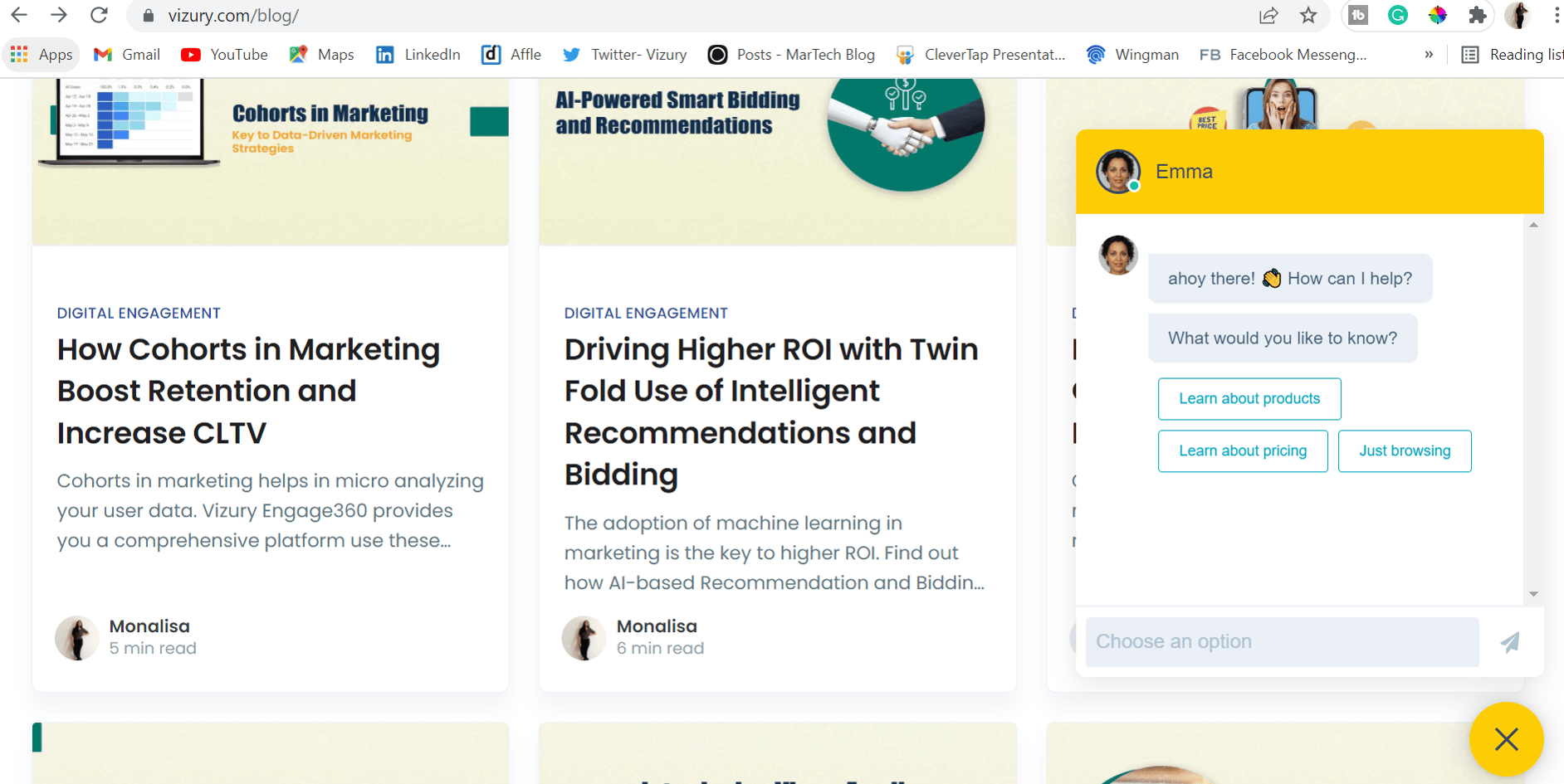
This is an effective tool that allows customers to connect with an agent or a bot in real-time on a company’s website or app. It enables customers to have asynchronous conversations which means they can ask a question and browse another web page knowing they can check the answer anytime.
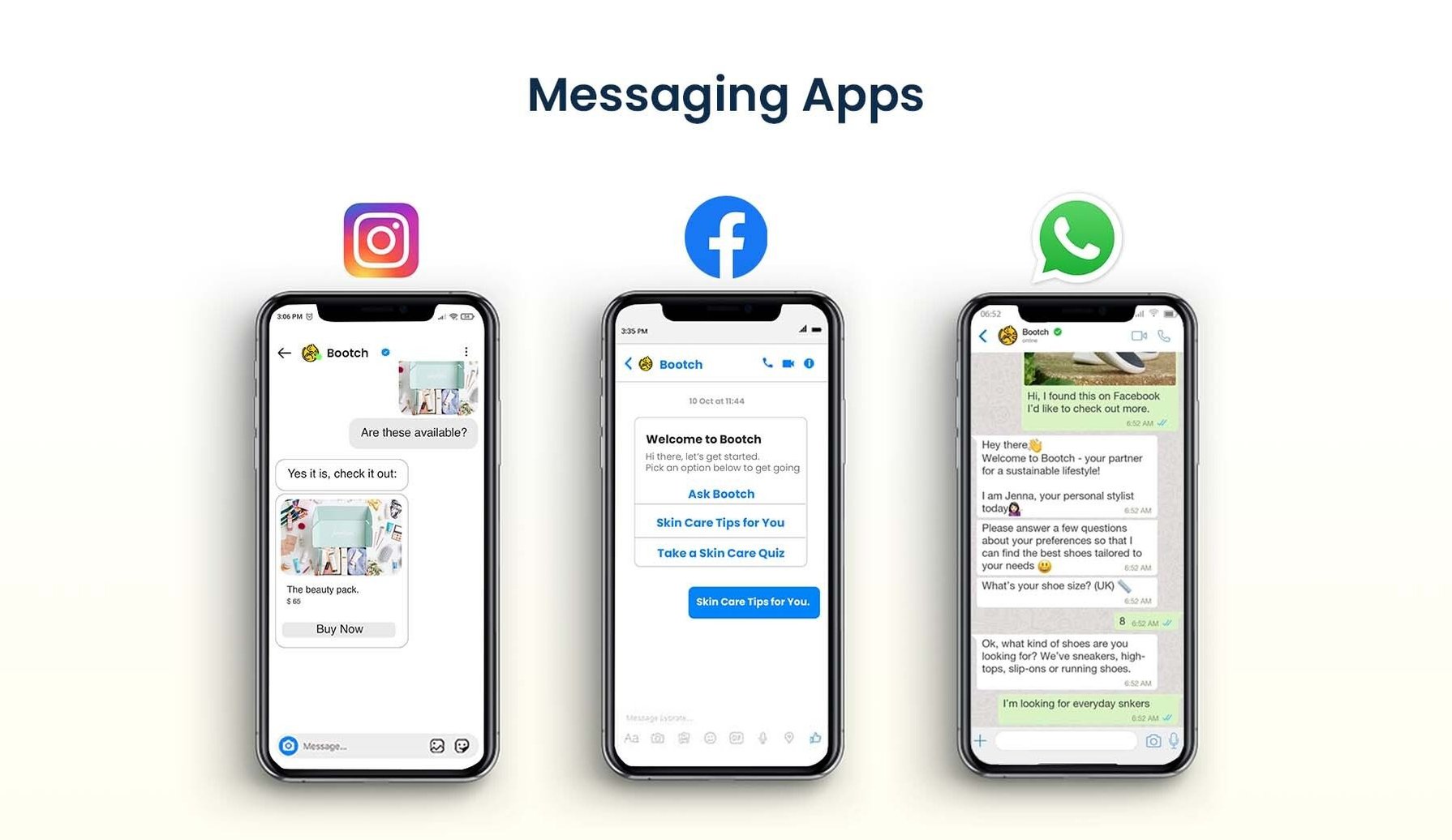
Messaging apps are an excellent medium to power meaningful conversations. Most customers prefer connecting with brands on mediums they already are such as Facebook, WhatsApp, Instagram DM.
It also allows brands to connect with customers in a fun and playful way using gifs, media-enriched texts, images, and videos.

Messaging and live chats are better equipped with chatbots. A chatbot allows businesses to automate certain interactions that are frequently asked.
For instance, chatbots can answer simple FAQs related to pricing, availability, product descriptions when a user is considering a purchase. It has also proven to be a great cost saver since it reduces the need for human agents for minor queries.
A conversational AI chatbot can also be trained to recommend products while a customer is shopping, send promotional offers, give order updates, and more without requiring human intervention.
Read also How you can build chatbots with Vizury?

Voice assistants have become relatively popular due to their ease of usage. A voice assistant is a type of software that completes certain tasks using voice commands or following the user’s directive.
For eg. Siri add potatoes to my grocery list - A simple voice command can help you add groceries to your list and complete your purchase. A recent report found that 74% of retailers consider voice commerce as a great opportunity for their brand.
Brands are now partnering with chatbot companies to ensure a seamless shopping experience to customers across channels. C-commerce is the new and improved way to shorten the bridge between prospect and purchase. A great conversational commerce example is H&M. The brand uses Kik bot to ask a series of questions to understand the shopper’s preferences and recommends products based on it. Another popular German brand, Maggi, leveraged new communication channels to stay relevant with the market. They launched a WhatsApp marketing campaign via Facebook. The campaign brought the Maggi Online Cooking School, Kochstudio experience to WhatsApp wherein users could contact them directly to ask cooking related questions. The bot “Kim”, can send step by step cooking instructions, offer personalized advice, or send links to relevant videos.
In the sea of competition, more often than not, we forget that our buyers are humans. Using a conversational style compensates for the lack of human touch.
In addition to this, the rapid advancements in technology and AI have allowed brands to offer sophisticated services to shoppers from the comfort of their homes. In fact, a report found that this technology provides up to 4 times more sales conversions than traditional methods.
It has become of utmost importance for e-commerce brands to embrace technology for its wide range of abilities starting from powering product discovery to customer loyalty.
✅Providing excellent customer experience
✅Automating commercial operations such as product discovery, recommendations, transactions
✅Being available for your customers 24/7
✅Reducing cart abandonment rates
✅Getting feedback
✅Building brand loyalty
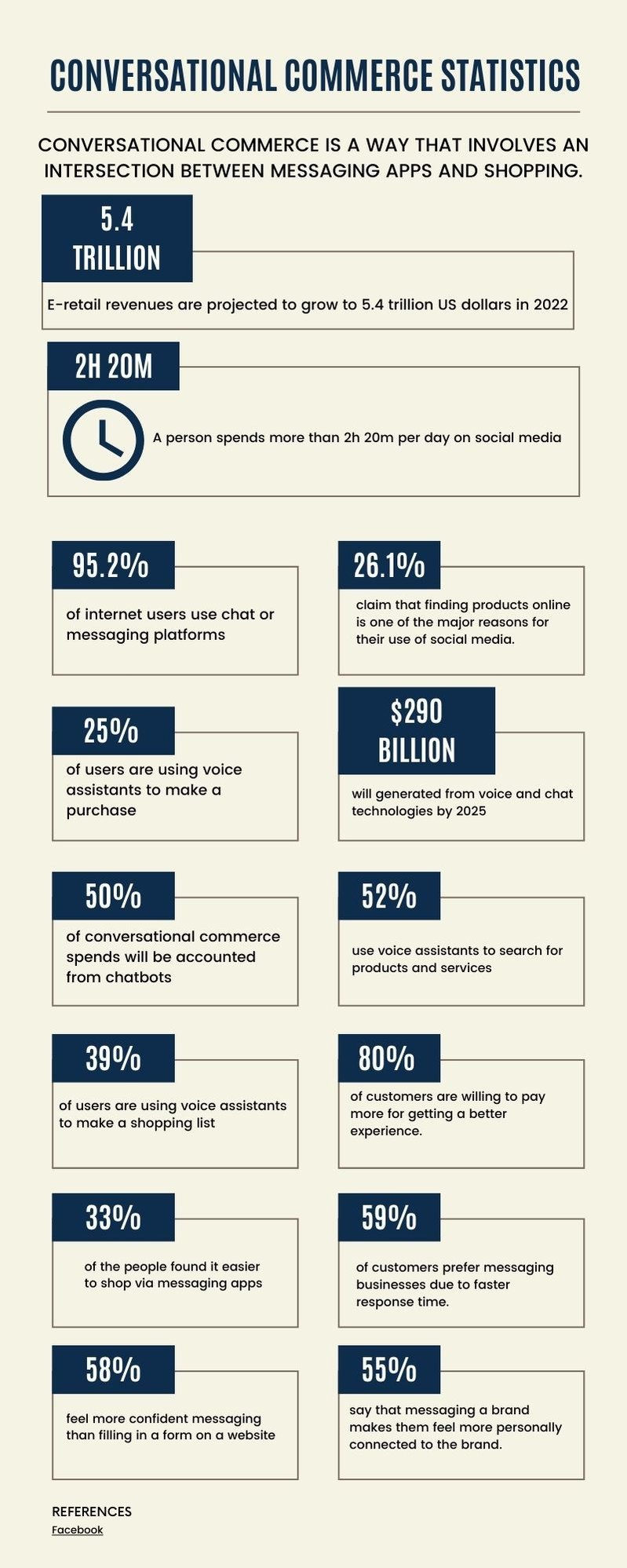
A Facebook study found that a majority of consumers use chat to make purchases. In addition to this, the study also found that it is more popular in categories like fashion and food services, where an impulsive purchase is more common.
WhatsApp is an excellent platform to power conversations that convert. From browsing products to building customer loyalty, WhatsApp is the ideal destination to give customers what they want.
Let’s take an example of how WhatsApp commerce works
A brand promotes its summer collection on a Facebook ad that clicks to WhatsApp. A customer lands on the ad and clicks on the “send message” button and lands on the brand’s WhatsApp chat.
General Query: The customer wants to know whether the dress is available in white.
The bot understands the query and replies back saying “Yes, it’s available in white”.
The bot further asks “shall I add this dress to your cart?”. The customer answers yes using the quick reply buttons enabled on the chat.
The bot further sends the customer product recommendations saying “we think this necklace would look lovely with this dress. Would you like to check it out?”
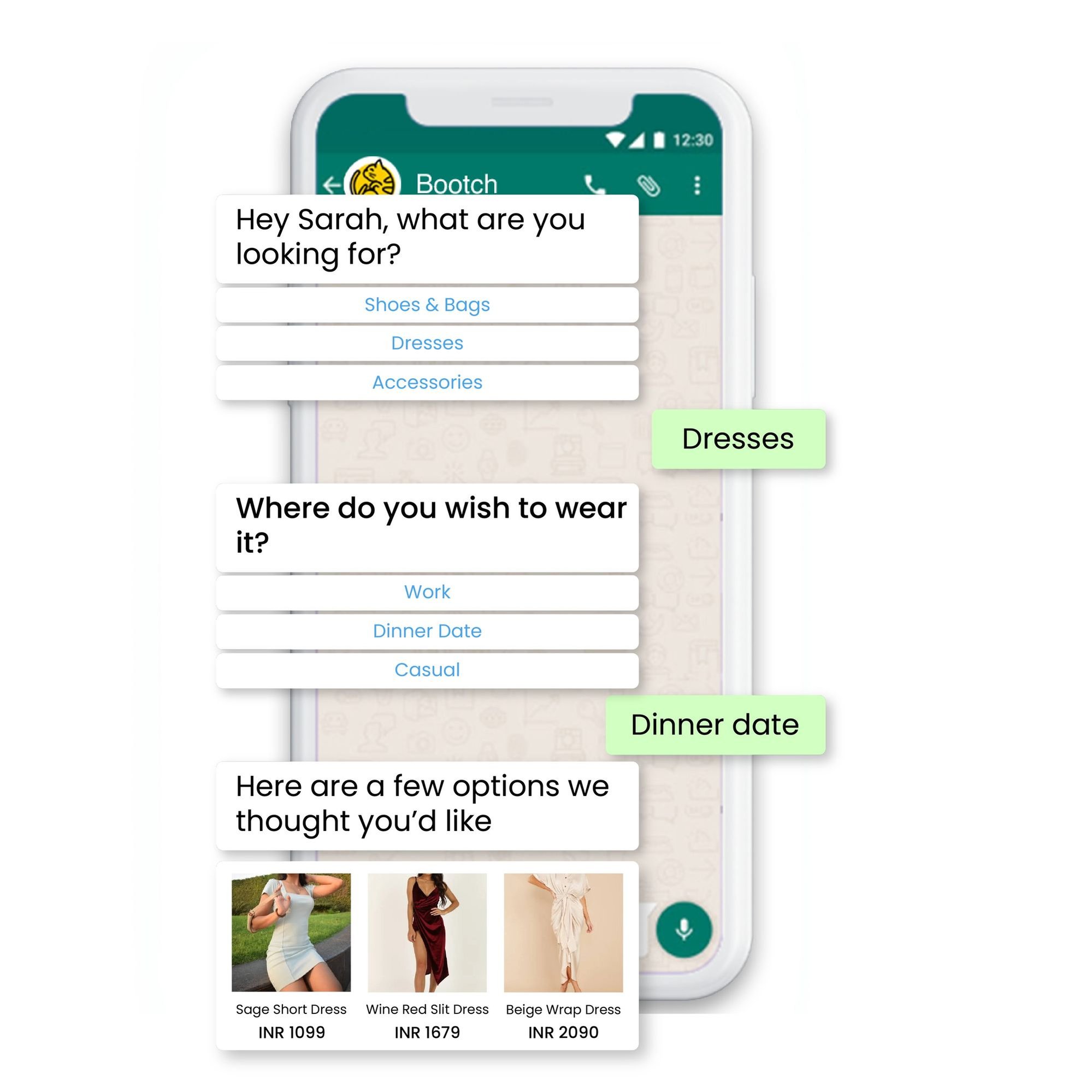
The customer responds yes and the bot shows a range of options for the customer to choose from. In case the customer adds it to their cart, it will ultimately increase the average order value. The bot was successful in conversationally selling products via chat.
The bot can also engage in post-purchase messages. For instance, if the customer enquires about the delivery the bot can promptly send updates updating the customer on the status of the order.
A Mckinsey report pointed out that personalization will be the key determinant of marketing success for businesses in the next 5 years. In addition to rich user data, the advancements in AI, NLP, and automation have enabled brands to create a more personal and human experience across channels.
Hence, in order to understand the customer better, it is essential to have owned customer data starting from the awareness stage to the loyalty stage. This exclusive one on one customer insight is now possible with WhatsApp. A conversational commerce tool like Vizury can help brands segment customer data and insights and cater to their needs in a more personalized manner on WhatsApp.
By leveraging the power of conversations around guiding the customer through the sales funnel, you give your brand the opportunity to easily scale. There are several benefits of leveraging conversations and some of them include:
It allows customers to browse products, ask questions on the go and complete their purchase via chat. It not only allow brands to sell products using conversations but can also increase your average order value.
For instance, when a customer is browsing products, your AI bot can recommend complementary products for the products added to cart to increase cart value.
Conversational commerce allow brands to stay connected with buyers across the journey. One on one interactions with customers allow brands to understand what they are looking for and cater to those needs in real-time.
You can also ask for feedback post-purchase and work on improving customer experience accordingly.
Customer loyalty is an integral part of any brand. To develop good customer relationships, it is essential to stay connected with customers who have shopped previously with your brand. You can keep your existing customers informed about new product launches, seasonal collections, sales and more. You can also leverage marketing automation tools like Vizury to collect customer data and target customers based on their purchase behavior, browsing history and more.
You can also run quick research and collect customer feedback. You can use quick reply buttons to make it easier for customers to give feedback.
For instance, if a customer purchases a product you can give options like “I enjoyed the product”, “It could’ve been better”, or “I am not happy with the product”. You can also eventually converse with the customer to resolve your customer’s issue, if any.
It pays attention to the details. Hence it poses immense capabilities to revolutionize the customer experience. And responsiveness is key in creating positive and meaningful messaging experiences. Are you ready to get started?
Book a demo at hello@vizury.com today
Conversational marketing on WhatsApp has made it possible for brands to engage and personalize the shopper’s experience at every stage of their...
Conversational marketing can be defined as a new way through which brands can engage with consumers in real-time across multiple channels.
What's stopping you from formulating a conversational AI strategy for your business? Find out how it can help your brand scale
Be the first to know about new B2B SaaS Marketing insights to build or refine your marketing function with the tools and knowledge of today’s industry.